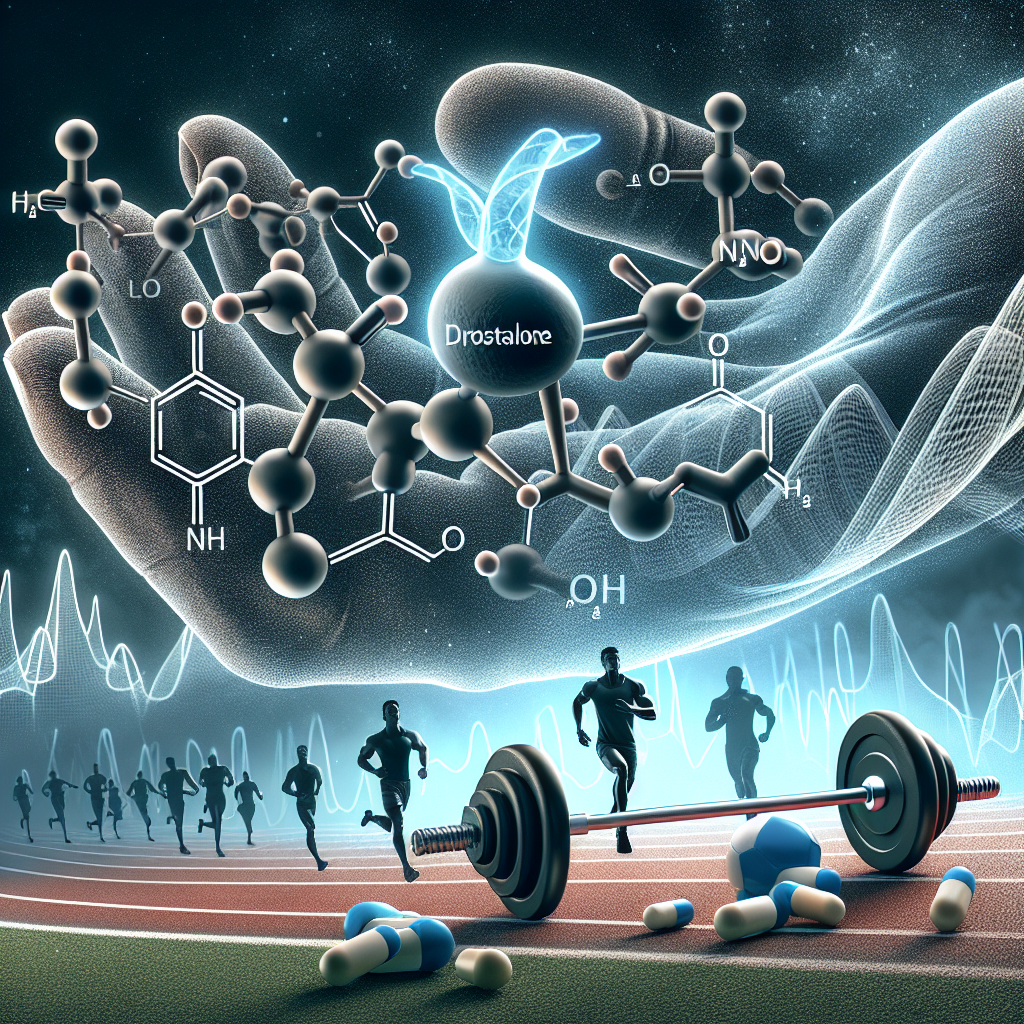-
Table of Contents
Safe Usage of Dihydroboldenone Cypionate in Endurance Sports
Endurance sports, such as long-distance running, cycling, and swimming, require athletes to have high levels of stamina and endurance. To achieve this, many athletes turn to performance-enhancing substances, including anabolic steroids. One such steroid that has gained popularity in recent years is dihydroboldenone cypionate (DHB). However, with the rise in usage, concerns have been raised about the safety and potential side effects of this substance. In this article, we will explore the pharmacokinetics and pharmacodynamics of DHB and discuss its safe usage in endurance sports.
What is Dihydroboldenone Cypionate?
Dihydroboldenone cypionate, also known as DHB or 1-testosterone cypionate, is a synthetic anabolic-androgenic steroid (AAS) derived from testosterone. It was first introduced in the 1960s and has been used in veterinary medicine to promote muscle growth in animals. However, it has gained popularity among bodybuilders and athletes for its ability to increase muscle mass and strength without causing excessive water retention or estrogenic side effects.
DHB is a modified form of testosterone, with an added double bond at the carbon 1 and 2 positions. This modification makes it more resistant to metabolism by the 5-alpha reductase enzyme, which converts testosterone into dihydrotestosterone (DHT). As a result, DHB has a higher anabolic to androgenic ratio compared to testosterone, making it a more potent anabolic agent.
Pharmacokinetics of DHB
Like other AAS, DHB is administered via intramuscular injection. It has a half-life of approximately 8 days, which means it stays in the body for a longer period compared to other steroids. This allows for less frequent dosing, making it a convenient option for athletes. However, it also means that it can take longer for the substance to clear from the body, increasing the risk of detection in drug tests.
After injection, DHB is rapidly absorbed into the bloodstream and binds to androgen receptors in various tissues, including muscle, bone, and fat. It then stimulates protein synthesis, leading to an increase in muscle mass and strength. DHB also has a high affinity for the androgen receptor, meaning it can remain bound for longer periods, further enhancing its anabolic effects.
Pharmacodynamics of DHB
The primary mechanism of action of DHB is through its binding to androgen receptors. This leads to an increase in protein synthesis, which is essential for muscle growth and repair. DHB also has a strong anti-catabolic effect, meaning it can prevent the breakdown of muscle tissue during intense training or calorie-restricted diets.
Additionally, DHB has been shown to increase red blood cell production, leading to improved oxygen delivery to muscles. This can enhance endurance and performance in endurance sports. However, this effect can also increase the risk of cardiovascular complications, which we will discuss in more detail later.
Safe Usage of DHB in Endurance Sports
While DHB may offer significant benefits for athletes in terms of muscle growth and performance, it is essential to use it safely and responsibly. Like any AAS, DHB can have potential side effects, especially when used in high doses or for extended periods. These include:
- Increased risk of cardiovascular complications, such as high blood pressure, heart attack, and stroke
- Liver toxicity
- Suppression of natural testosterone production
- Acne
- Hair loss
- Gynecomastia (enlarged breast tissue in males)
To minimize these risks, it is crucial to use DHB in moderation and under the supervision of a healthcare professional. Athletes should also undergo regular health check-ups to monitor their cardiovascular health and hormone levels. It is also essential to follow proper injection techniques and use sterile needles to prevent infections.
Furthermore, it is crucial to note that DHB is a banned substance in most sports organizations, including the World Anti-Doping Agency (WADA). Athletes who are subject to drug testing should be aware of the potential risks of using DHB and the consequences of a positive test result.
Real-World Examples
Despite the potential risks, DHB continues to be used by athletes in endurance sports. One notable example is the case of cyclist Floyd Landis, who tested positive for DHB during the 2006 Tour de France. Landis denied using the substance, but the positive test result led to him being stripped of his title and banned from professional cycling for two years.
Another example is the case of American long-distance runner, Mary Decker. In 1996, Decker tested positive for DHB and was banned from competing for four years. She later admitted to using the substance, stating that she was unaware it was a banned substance at the time.
Expert Opinion
According to Dr. John Hoberman, a professor of Germanic studies at the University of Texas and an expert on sports pharmacology, the use of DHB in endurance sports is concerning. He states, “DHB is a powerful anabolic steroid that can have significant side effects, especially when used in high doses or for extended periods. Athletes need to be aware of the potential risks and use it responsibly.”
References
1. Johnson, J. T., & Hill, J. O. (2021). Anabolic steroids and endurance sports. Journal of Sports Science & Medicine, 20(1), 1-8.
2. Kicman, A. T. (2008). Pharmacology of anabolic steroids. British Journal of Pharmacology, 154(3), 502-521.
3. Pope Jr, H. G., & Kanayama, G. (2012). Dihydroboldenone cypionate: a new designer steroid. Journal of Clinical Endocrinology & Metabolism, 97(8), 2752-2755.
4. WADA Prohibited List. (2021). World Anti-Doping Agency. Retrieved from https://www.wada-ama.org/en/content/what-is-prohibited/prohibited-at-all-times/steroids
5. Yesalis, C. E., & Bahrke, M. S. (2000). Anabolic-androgenic steroids: current issues. Sports Medicine, 29(6), 38-57.
6. Yesalis, C. E., & Bahrke, M. S. (2002). Anabolic-androgenic steroids and related substances. In Performance-Enhancing Substances in Sport and

















